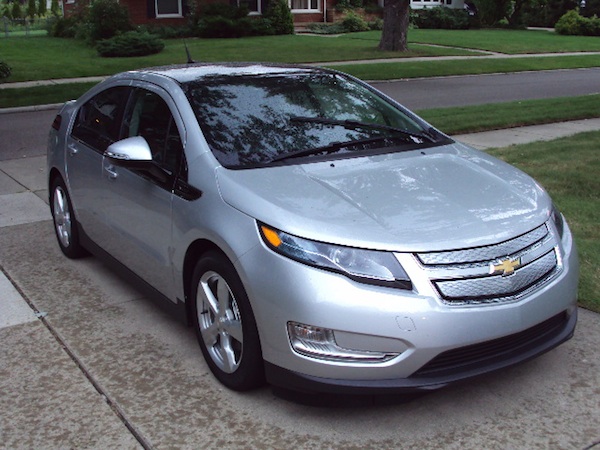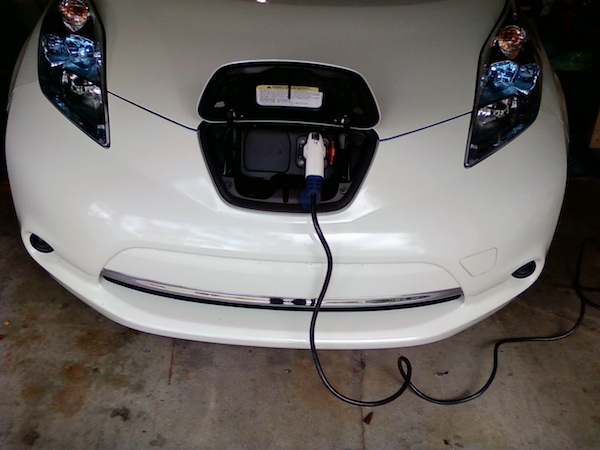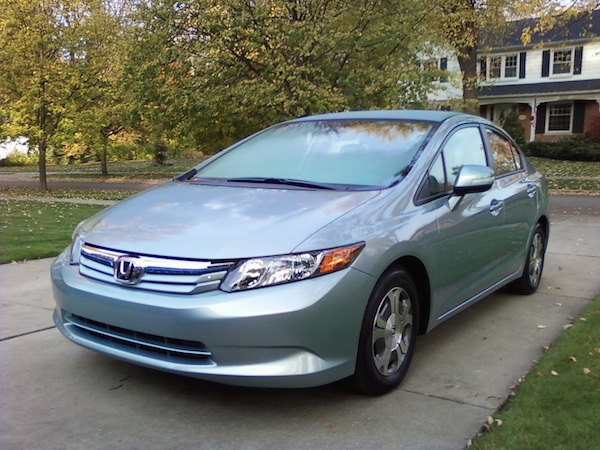
Electric cars have been all the rage in recent years, and finally it seems like the available choices for would-be buyers are expanding. For a decade, Toyota Prius was all you heard about -- even though Honda had a Civic Hybrid and Ford offered a small Escape SUV Hybrid. There were some others, too, but none sold well.
Over the last few months, Detroit has witnessed the U.S. introduction of three new or newer entries in the electric vehicle (EV) field, and each takes a different approach. We'll get to that in a moment.
On Veterans Day last week, news broke that a Chevrolet Volt (one of this year's new EVs), which had been crash-tested by the National Highway Traffic Safety Agency, spontaneously burst into flames three weeks after the test while it was sitting in a Wisconsin junkyard unattended.
Indeed, under the hood of a Volt, there's a warning for "Emergency Personnel" that reads (in three languages): "To help avoid personal injury in an emergency, turn ignition to 'Off' [and] cut all positive cables connected at yellow tape located behind fuse access panel in rear compartment area." [There's an image of this warning label attached.]

Now, if there's anything than humankind fears more than the unknown, it's fire. Both NHTSA and Chevrolet are proclaiming there is no fire hazard with Volts, but the damage is done, and it likely will haunt the model forever. This likely will deter sales of what is a very good solution to excessive use of fossil fuel in personal transportation. Meanwhile, G.M. and government experts are trying to figure out what went wrong.
But, as they say in middle-of-the-night TV commercials, "That's not all, folks."
This writer had the opportunity over the last couple of months to test-drive the three new EVs for a week each. Here's a run-down on them:

Chevrolet Volt -- an elegant four-place plug-in hybrid electric vehicle (PHEV) featuring, like other hybrids, an economical internal combustion engine combined with a battery-powered motor. This operating battery (as opposed to conventional storage battery) can be recharged overnight from a regular household 110-volt line and you can also top off the gas tank. The two power sources work together seamlessly, with the Volt usually running on juice until the battery charge is expended. Sticker price as tested: a few dollars short of $44,000, which makes it more Cadillac than Chevy.


Nissan Leaf -- a five-passenger plug-in battery-powered electric vehicle (BEV) that may be re-charged overnight, say 12 to 18 hours, from an ordinary household 110-volt outlet, or about half that time from a special 220-volt line or, in an emergency, from a 440-volt line in maybe 2 to 4 hours. Fully charged, it supposedly has a range of "up to 100" miles but the devil is in the details as usual. I call it a fair weather friend, because use of the heater or air-conditioning drastically reduces the range -- like in half.
There aren't any hills to speak of around Southeast Michigan so I couldn't determine if climbing them would likewise drain the Leaf's battery. This confines the practical use of the Leaf -- or, importantly, any other pure electric BEV -- to motorists with either (a) more than one vehicle available as alternate wheels, (b) an inviolable daily route within the bounds of the battery's range under worst-case circumstances or (c) iron discipline in planning use of the electric cars for routine errands and trips, so as not to run out of juice. The Highway Patrol can't bring you a gallon of electricity. Sticker price as tested: a hair below $34,000, but theoretically you'd never have to buy another gallon of gas.

Honda Civic Hybrid -- a well-executed five-passenger non-rechargeable hybrid gas-electric (HEV) version of the Japanese company's popular compact sedan. Unlike, the Volt and Leaf, the Civic Hybrid is almost indistinguishable from the standard 2012 Civic -- except at the price sticker. Equipped with a navigation system, upscale entertainment system and most creature comforts, the Civic Hybrid stickers at $26,320, up from $19,425 for a non-hybrid Civic LX. I'd say that is a huge bargain compared to the other two. But the hitch is, if you're a hardcore environmentalist, you have to put gas in it -- though not much comparatively, because the operational battery is bearing much of the load.
Note that all three of these electrics are impressively quiet, smooth in operation, and ride well, thanks to the weight of the batteries close to the road surface. But each has its real or suspected shortcomings -- worrisome fire danger for the pricey Volt, range anxiety for the relatively costly Leaf and proportionately greater use of gasoline for the Civic. The Volt and the Leaf, like the Toyota Prius, are designed differently, unique so as to stand out lookin' green, whereas the Honda and Ford approach has been to make their models' hybridness virtually invisible.